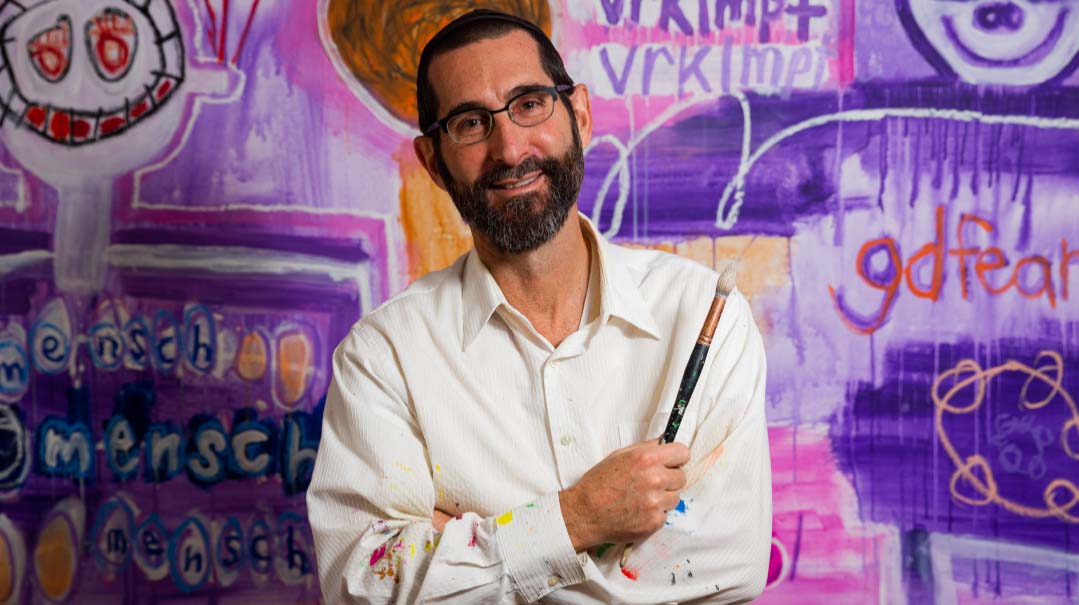The Bigger Picture

Former celebrity photographer Jared Bernstein walked away from it all when he realized the flash was missing

Photos: Elchanan Kotler, Jared Bernstein Photography
Even if you’re one of those people who think modern art looks like someone accidentally kicked a bucket of paint over a canvas,
chances are you’ll still be touched by an unconventional new book called Courageous Chicken: A Journey to Living Courageously. It’s the very personal account of former celebrity photographer Jared Bernstein, portrayed through his paintings and poems: an exploration of his fears and triumphs as he exchanged the glitz and glitter of inner-circle access to top-tier musicians, actors, and real estate tycoons (including Donald Trump) for a life of Torah observance in Eretz Yisrael.
If you’ve been to upscale weddings in Israel in the last decade, you’ve probably seen Jared — the unruffled, confident photographer with the black yarmulke, white shirt, and neatly trimmed beard who’s always calm and focused under pressure, organizing those impossible family pictures, getting overtired kids to smile. Yet behind the wedding photographer’s camera lens is an artist’s soul.
“In the book, through my paintings and my poems, I share my experiences of finding G-d and gaining the courage to transform my life,” Jared says, emphasizing that it’s not just a collection of modern art, but what he calls, “a public mirror to my soul. I grew up barely knowing I was Jewish, but despite the money and status I had, I wasn’t happy. In 1998 I found Hashem, walked away from that life, got married, moved to Jerusalem and was blessed with a beautiful family. But it’s taken me 23 years to get up the nerve to share my story. The book is a confrontation with my identity. It’s the story of my life, of my teshuvah, of my coming clean.”
Oops! We could not locate your form.







